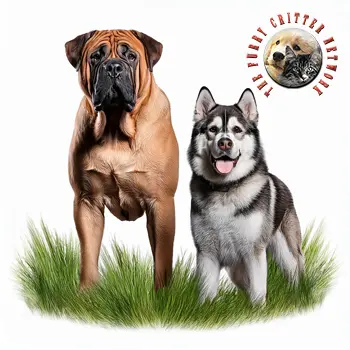Behavior
Siberian Huskies are loving, gentle, playful, happy-go-lucky dogs that are fond of their families. Keen, docile, social, relaxed and rather casual, this is a high-energy dog, especially when young. Good with children and friendly with strangers, they are not watchdogs, for they bark little and love everyone. Huskies are very intelligent and trainable, but they will only obey a command if they see the human is stronger minded than themselves. If the handler does not display leadership, they will not see the point in obeying. Training takes patience, consistency and an understanding of the Arctic dog character. If you are not this dog’s 100% firm, confident, consistent pack leader, he will take advantage, becoming willful and mischievous. Huskies make an excellent jogging companion, as long as it is not too hot. Huskies may be difficult to housebreak. This breed likes to howl and gets bored easily. Does not do well if left alone for a long period of time without a great deal of exercise beforehand. A lonely Husky, or a Husky that does not get enough mental and physical exercise can be very destructive. Remember that the Husky is a sled dog in heart and soul. It is good with other pets if raised with them from puppyhood. Huskies are thrifty eaters and need less food than you might expect. This breed likes to roam. Siberian Huskies can make wonderful companions for people who are aware of what to expect from these beautiful and intelligent animals and are willing to put the time and energy into them.
This breed is made for the great outdoors but also makes a wonderful companion. The Siberian Husky needs intense exercise to maintain mental health. Weekly brushing is required. Currying is required during seasonal shedding.
Health
Health issues in the breed are mainly genetic, such as seizures and defects of the eye (juvenile cataracts, corneal dystrophy, canine glaucoma and progressive retinal atrophy) and congenital laryngeal paralysis. Hip dysplasia is not often found in this breed; however, as with many medium or larger-sized canines, it can occur. The Orthopedic Foundation for Animals currently has the Siberian Husky ranked 155th out of a possible 160 breeds at risk for hip dysplasia, with only two percent of tested Siberian Huskies showing dysplasia.






